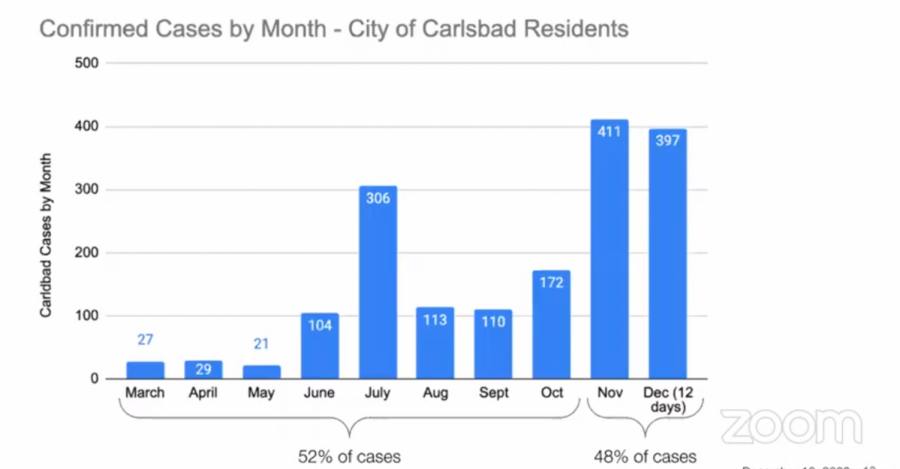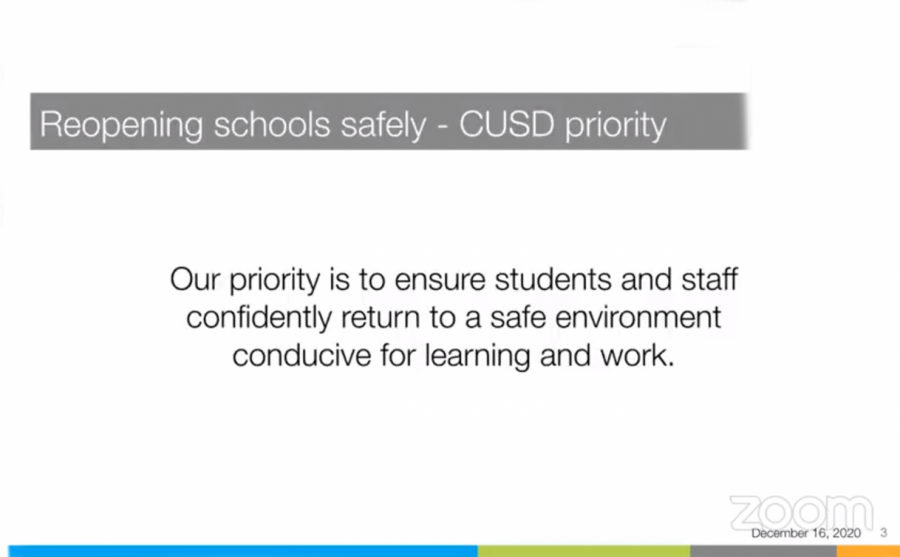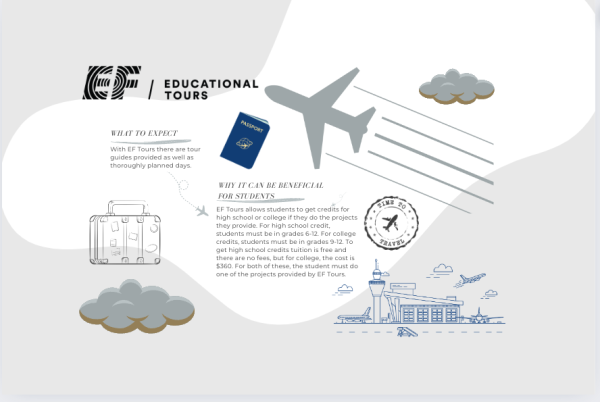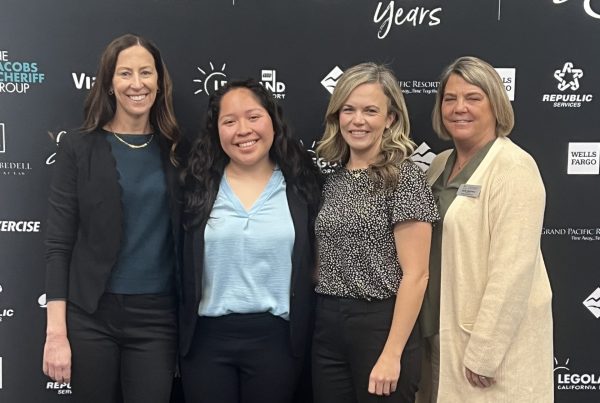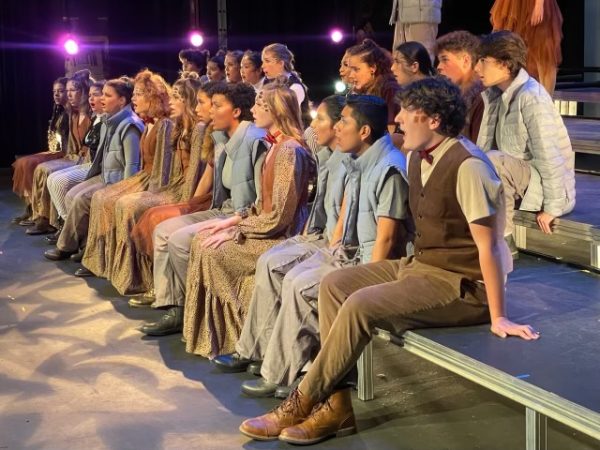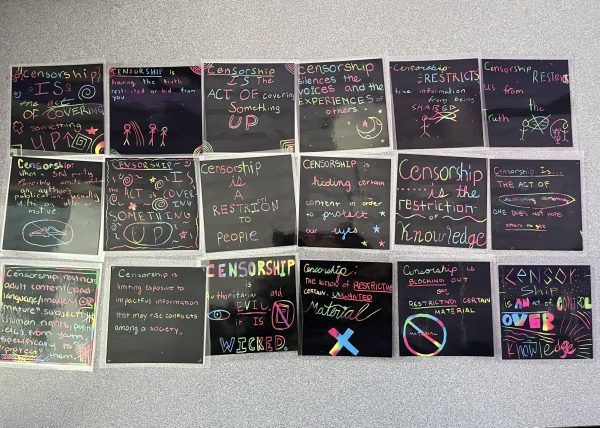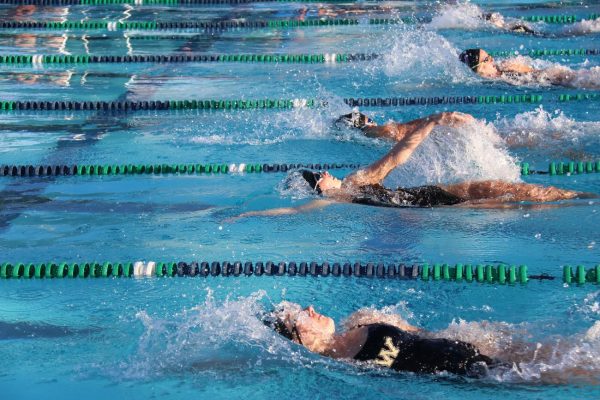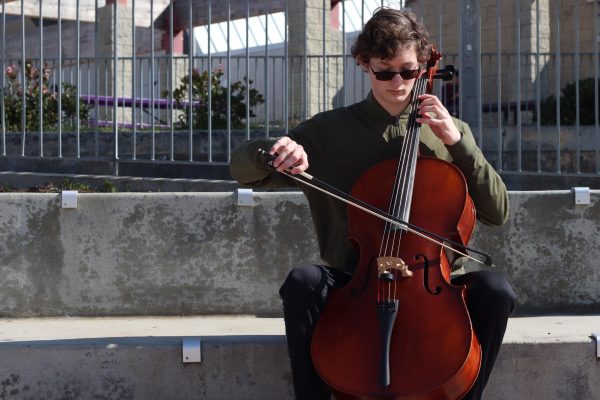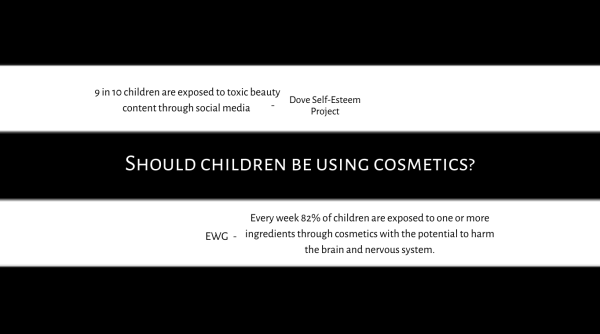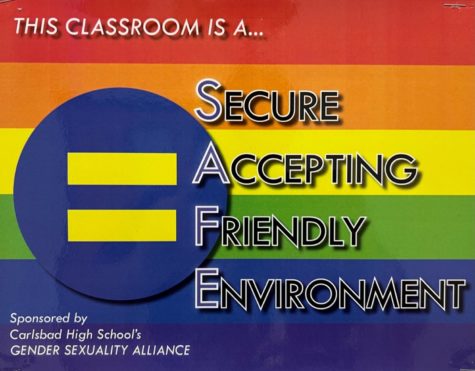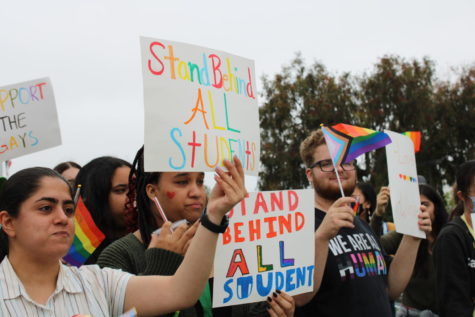Hybrid return to school has been postponed
Graphic taken from the Superintendent’s presentation from the Wednesday Dec. 16 school board meeting.
Barely before midnight on Dec. 16, the Carlsbad Unified School Board unanimously voted in favor of postponing the in-person return for high schools and middle schools to Jan. 25. The decision was made due to delays in safety measures like the arrival of air filters needed for HVAC systems to be safer and a worrying pool of substitute teachers available.
In this last week, CUSD has been unable to provide nine classes with teachers given a substitute shortage, fears of the lack of measures in place, and rising demands for substitutes among teachers. This is in addition to a substitute bidding competition with neighboring Oceanside Unified School District.
“I’m not confident in our ability to provide the staff required to implement the board’s direction of a full reopening of elementary on January 5th and a hybrid return for secondary; I’m not confident of that at this time,” Assistant Superintendent of Personnel Rick Grove said at the board meeting.
Elementary schools will now experience a full reopening sometime between Jan. 5 and 25 — as soon as staff recommends that they are ready to open. Staff also recommended that secondary schools start on the 25th because of concerns over finals and an anticipated spike in cases following the winter holidays. This comes after the surge in cases following Thanksgiving break.
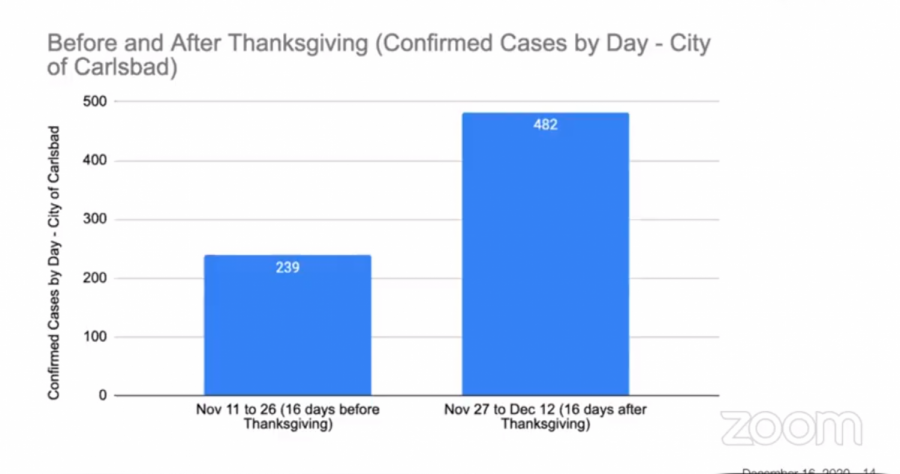
“I’ve already described [that due to the pandemic we have] two classes closed and two principles out,” Grove said. “We believe, and we are making every effort to continue normal operations to the degree possible, but it is certainly indicative of a growing problem. “I know a couple of callers [to the board meeting] indicated that there was no post-thanksgiving spike, I mean, that certainly contradicts the data that [Superintendent] Dr. Churchill just shared. The data that’s available on county and state websites. We certainly are experiencing a spike, we certainly are experiencing a spike in Carlsbad.”
The delayed measures in question include HEPA and MERV-13 filters for air conditioning, and a symptom screening app the district was to begin training with today, Dec. 17. These measures were supposed to be fully in place by Jan. 5 in order for schools to go back but that is no longer the case.
“Nationally we have not seen schools to be transmission points as long as the appropriate mitigation strategies are in place,” Superintendent Benjamin Churchill said. “Unfortunately tonight, we have to provide an update that we’re no longer on track for full deployment of all of these strategies. This is different than what we told you one week ago and it’s based on the most up-to-date info we have from our vendors, manufacturers and distributors.”
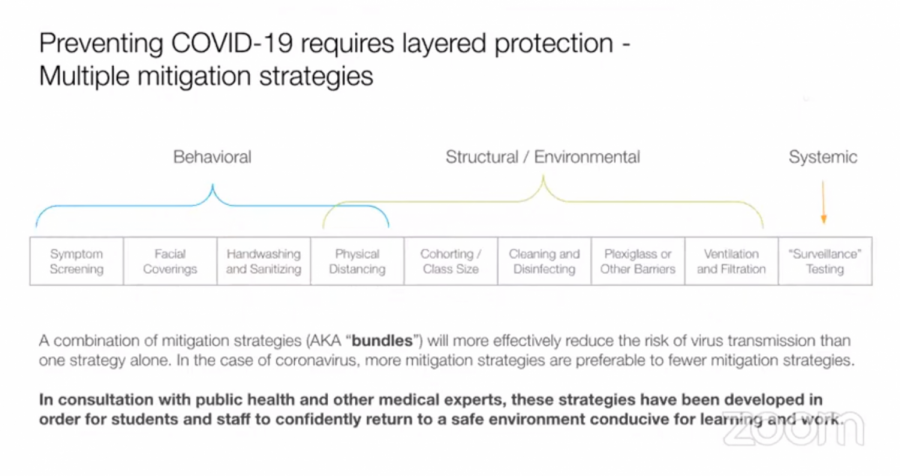
The symptom screening app the district will be using was supposed to be operational this week so that training can occur over break, but now the app is not expected until the first week of Jan. due to configuration issues on the student end. And although nearly all elementary schools have 100% of the HEPA and Merv-13 filters they need, Sage Creek High School and Aviara Oaks Middle School are below 60%. HEPA filters are also delayed for secondary schools from their planned delivery of Dec. 8 to most likely being shipped by Dec. 31.
“Again, this is really because everyone nationwide is trying to get both Merv-13 and HEPA filters,” Assistant Superintendent Rob Nye said. “And so we can’t guarantee that we’re now going to have these things. We were on a really nice track, but again, we’re at the mercy of the manufacturers.”
The delays in measures, unprecedented rise of COVID-19 cases, and shortage of substitutes made Jan. 5 a much harder target for staff to reach than it was initially. The benefits of delaying this start date by three weeks to the 25 for secondary schools and perhaps elementary schools were explained to the board shortly before the unanimous vote that agreed with the staff’s recommendation.
“There is a perception that incubation is a two-week period and if folks are hanging out together on say New Year’s Eve, that fourteen days later positive cases will have been determined and then they will run their course,” Grove said. “I can’t state definitively what will be different in three weeks [with regard to COVID cases], I know that three weeks, from our standpoint, most importantly gives us additional time to get the mitigation factors in place, it gives us additional time to backfill these new positions. Three [more teacher] leaves happened today, so we’re trying to backfill those positions with just a few days left before break.”
